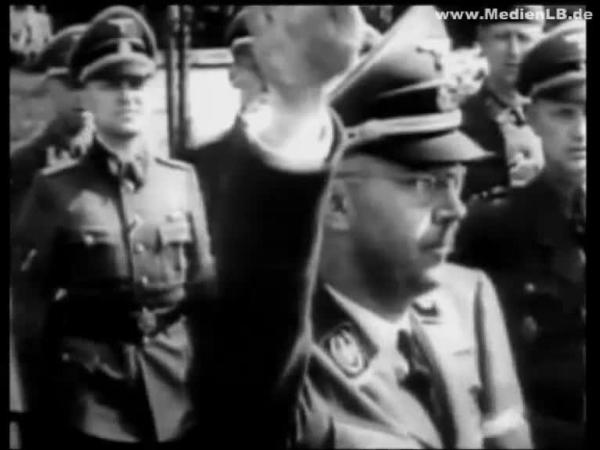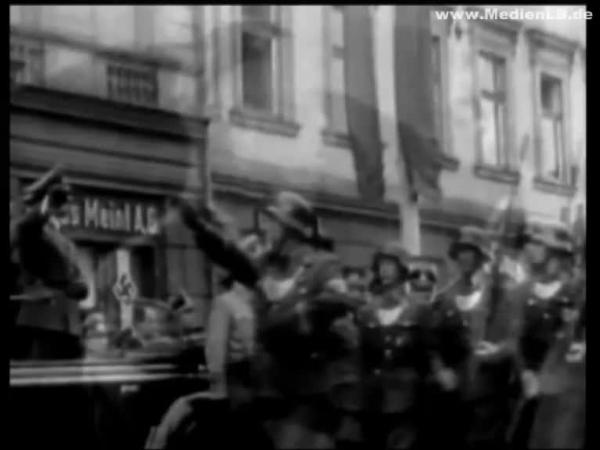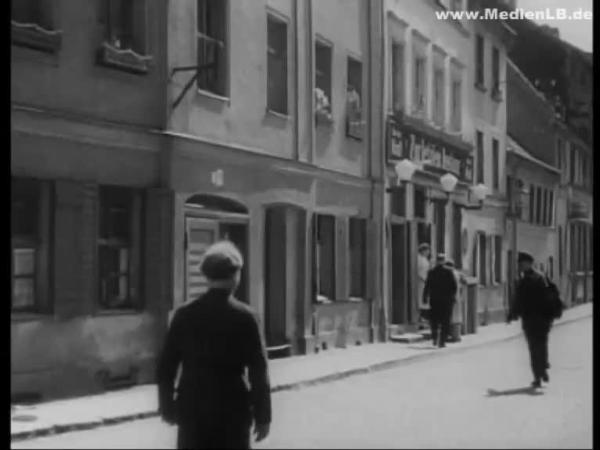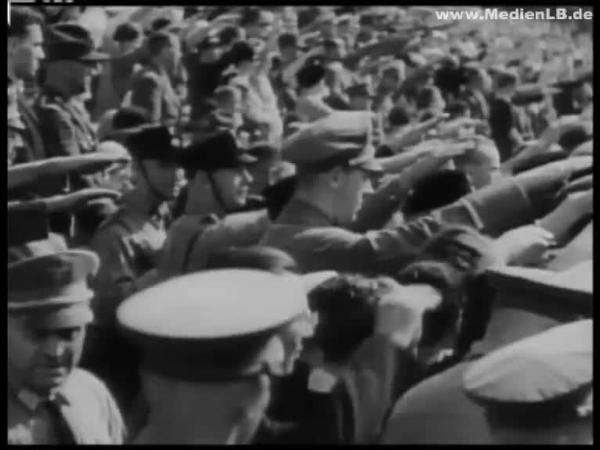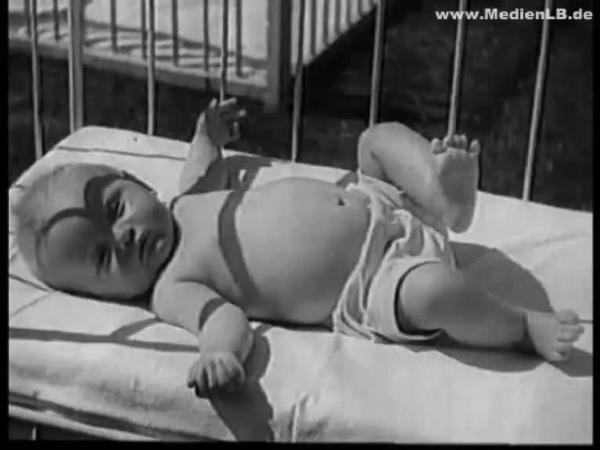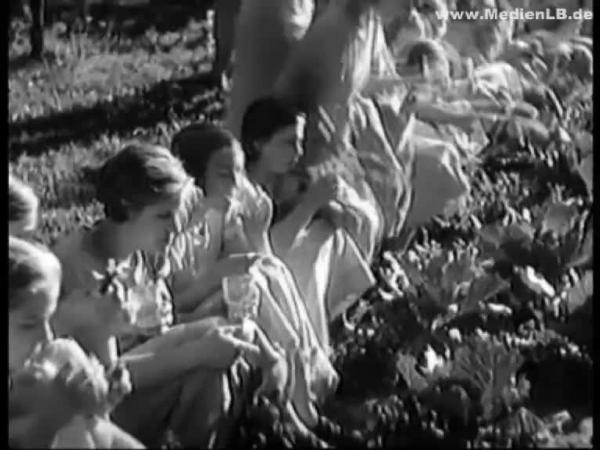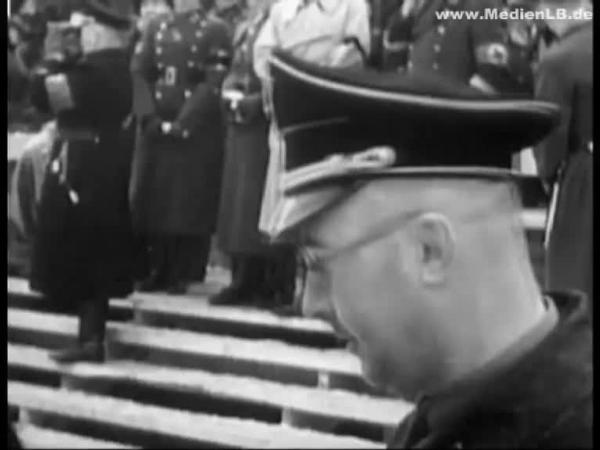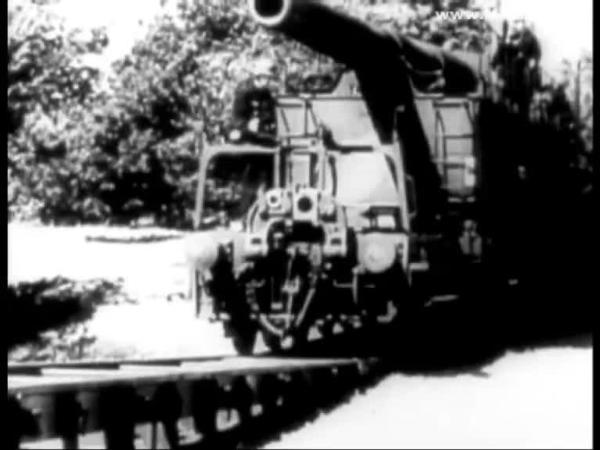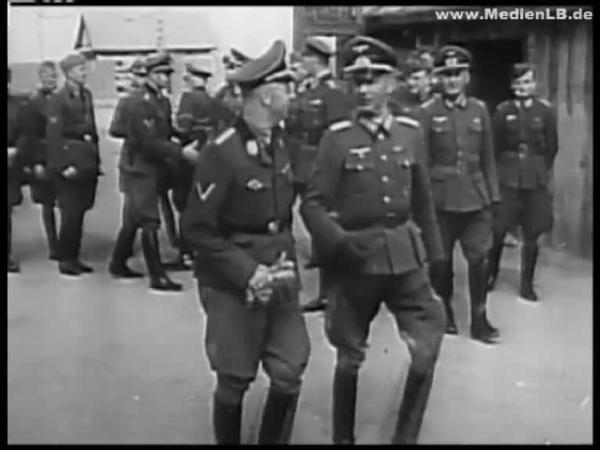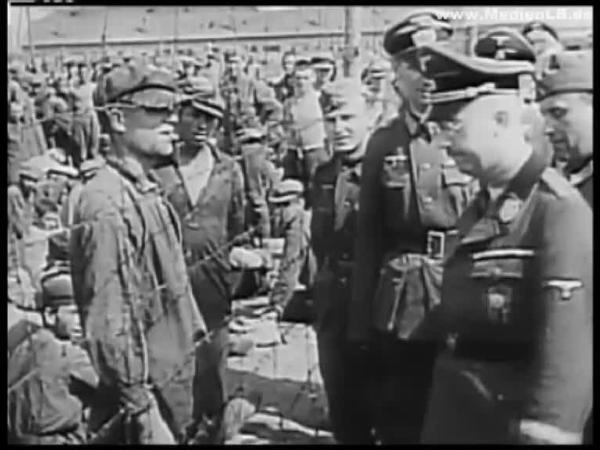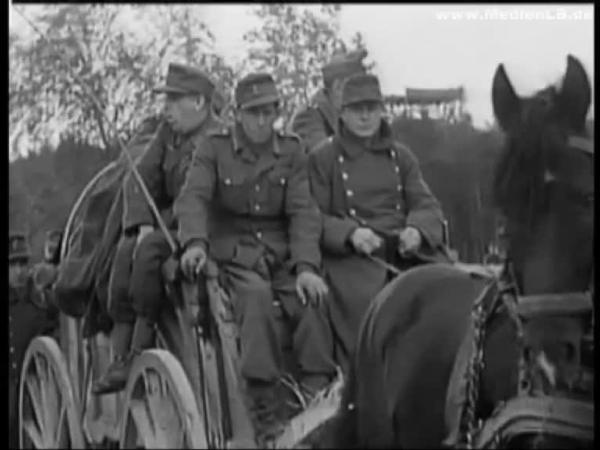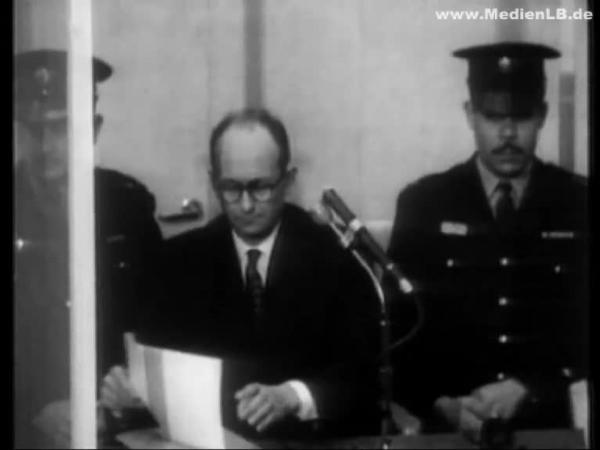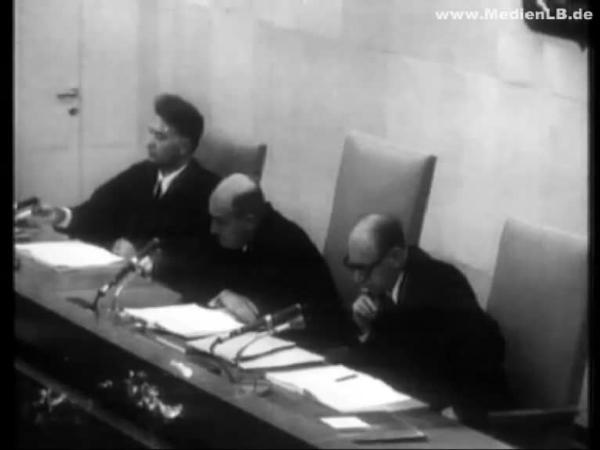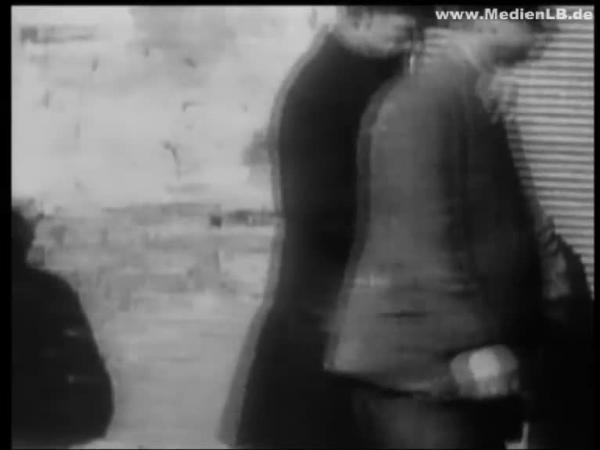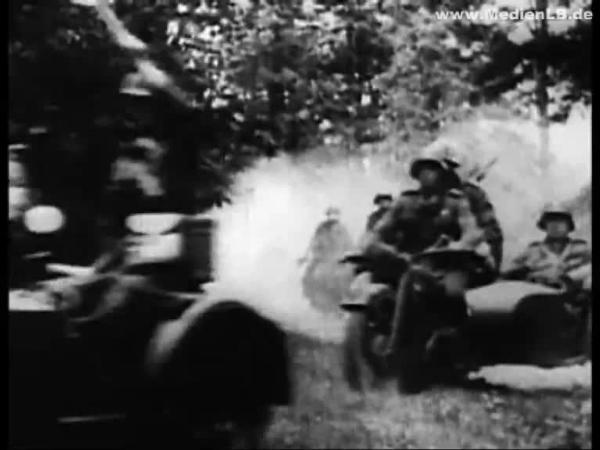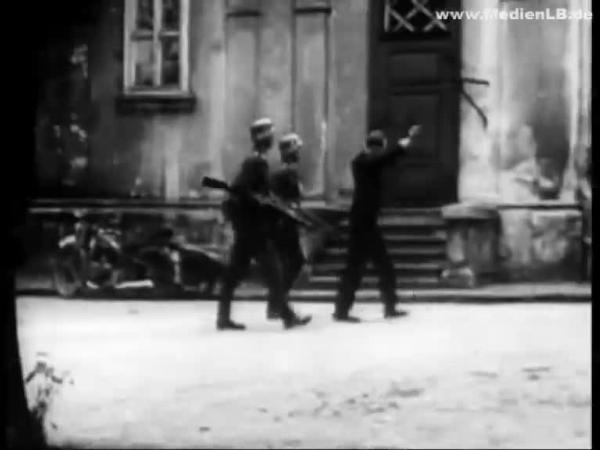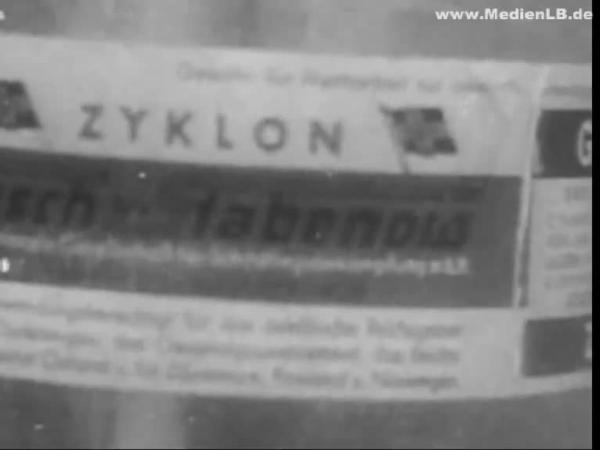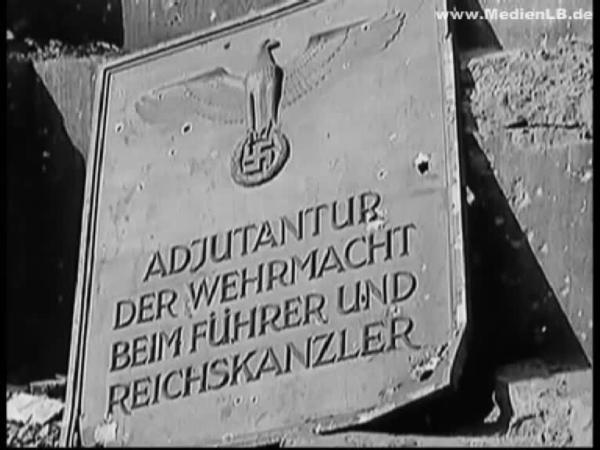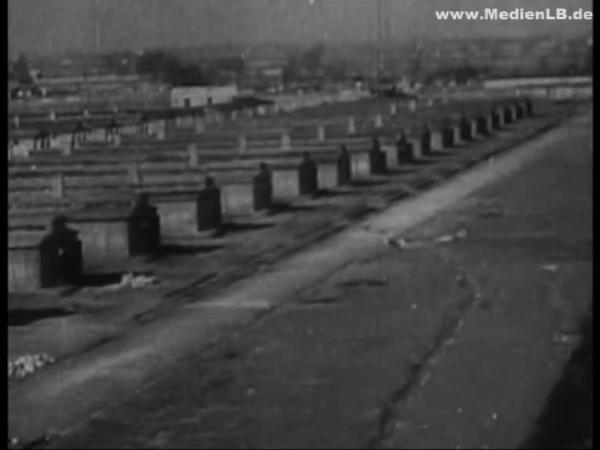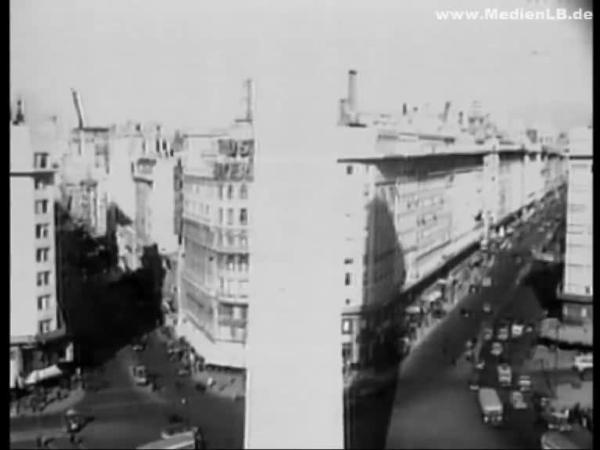Männer hinter Hitler II
Himmler & Eichmann

Men behind Hitler II (Total movie)

Intro SPEAKER They wanted to rule the world. They possessed weapons of seduction and violence ... and 50 million people lost their lives. ... Millions of civilians ... millions of soldiers. In the end, however, they were defeated. Heinrich Himmler 1. Rise to Power 1.1. Prologue SPEAKER … one of the leading members of the Nazi Party, a merciless murderer and keen organiser of the extermination camps. He loved to refer to himself as executioner without mercy. Reichsführer-SS, Chief of German Police, Minister of the Interior. At his command, millions of people were imprisoned, tortured, killed. Original soundtrack Ferruccio Valerio: “April 1945: In the bunker of the Reich Chancellery of Berlin, everyone was now aware that Germany had lost the war. Hitler preferred to die and expected the same of his faithful party leaders. Two days before his suicide he listened to the news from radio London: »Himmler has offered unconditional surrender to England and the United States.« Thus Adolf Hitler learned that his most trusted man had betrayed him.” 1.2. Early Years SPEAKER Heinrich Himmler was born in Munich on 7th October 1900 as the second of three sons. His father was a grammar school teacher, his mother a caring housewife. They raised their children as good Catholic and national conservative boys. Heinrich was one of the best pupils in his class. He loved mathematics, Latin, history and Greek. He was a slender boy, fastidious, timid, well-behaved. At the outbreak of the First World War Himmler was 14 years old and enthusiastic, like many boys of his age. He wanted to become an officer and go to the front but was still too young. After graduating early in 1917 he enlisted with the Bavarian infantry regiment as an officer cadet. But even before he completed his officer training the war ended. The German defeat and the humiliating peace conditions imposed on the new republic stirred his rage. In 1919, Himmler began to study agricultural economics at the TU Munich and graduated with a diploma in 1922. He found a job as a laboratory assistant in a fertiliser company but resigned from the employment after a few months. In 1923, Himmler took part in Hitler’s failed coup d’état in Munich. He managed to escape and committed himself to the »NS Freedom Movement«. At that time his ideological convictions were very useful for his career ambitions. In 1925, he joined the infamous SS where his organisational talents were at once recognised and appreciated. Already in 1927, he was appointed Deputy Reichsführer-SS. 1.3. Reichsführer-SS Nuremberg 1927: propaganda rally of Adolf Hitler, behind him … Heinrich Himmler. 6th January 1929: Hitler appointed Himmler Reichsführer-SS. For Himmler, the SS was not a simple protection squadron (Schutztruppe) but he considered it a kind of order of knights … tall men, blond hair, blue eyes. Himmler personally supervised the details of their uniforms: the cap was black with silver ornaments and in the middle, a death’s head stood out. On a red armband with black seams the swastika was flaunted. Those who wanted to be part of the group had to pass several tests, among others also the Reich sport badge. Furthermore, there was the marriage law. Only those who declared themselves willing to be guided by considerations of race and genetic health in marriage were admitted. No member of the SS was permitted to marry before the genealogy of the prospective bride had been investigated by officials of the new »SS Race and Settlement Office«. The aims were the preservation of the racial substance of the people, the multiplication of genetic health and the protection of pure blood. The SS members were intended to found a master race destined to rule Germany and the world. 1933: Adolf Hitler came into power. In 1936, he appointed Himmler Chief of the Secret State Police - the infamous Gestapo, the central executive arm of the National Socialist regime. Its authority extended from the persecution of minorities to the control of youth and culture. 2. Persecution and Extermination of the European Jews 2.1. Racial Theory and Germanic Cult »Racial theories« and »racial hygiene« formed basic elements of the National Socialist world view. German women were selected according to biological and scientific criteria. “National Socialism is more than a religion. It embodies the will to breed the overman.” Himmler declared. The gruesome doctrine transformed he image of the woman, who was no longer considered an individual but the fertile guardian and donor of »high-quality« genetic material, whose body would bear the future warriors of the Reich. Life … death. Himmler also controlled the concentration camp system. In this world of pain and death he felt thoroughly at ease. The SS and its leadership constantly increased their prestige and importance in the eyes of the Führer. »The SS is a group entirely devoted to Adolf Hitler. They would do anything for him. If Hitler told me to shoot my mother ... I would do it.« 2.2. Extermination through Work On 9th November 1938, after the Kristallnacht, when Hitler started the genocide of the European Jews and had all troublesome allies brutally slaughtered, the SS became the paramilitary militia of the Thousand-Year Reich and Himmler its cruel commander-in-chief. Because of his almost ridiculous figure, his extraordinary extravagance and his absolute incompetence as a soldier, he seemed to be a droll and innocuous guy, a funny imitator of the Führer, but the truth was far from it. The concentration camps contained millions of prisoners who could be put to work in the arms industry. Near Auschwitz, Himmler had a huge factory built for the production of synthetic rubber. The Jewish prisoners were forced to work there and many of them died: extermination through work. He asserted that the preservation of the Germanic race justified any cruelty. He was obsessed by a peculiar hotchpotch ideology consisting of racial theories, rustic beliefs and naturalistic doctrines. He believed to be a reincarnation of Emperor Henry I, who had fought against the Slavs and Magyars. He got his inspirations from the ancient Germanic world, which consisted of mystic legends describing sacrifices and archaic rituals. Odin, the rediscovery of the secret Templars, the myth of the cruel Teutonic Order of Knights, the legend of the Holy Grail, Wagner’s »Parsifal«. So Hitler was the heroic knight, loved by millions of people. The heroic knight, born to fulfil his mission: to create a new and pure world through chaos and cruelty. 2.3. »Final Solution« of the Jewish Question 1939: attack on Poland. Himmler’s deadly soldiers in action. Germany assaulted Denmark and Norway. The Wehrmacht occupied Belgium, Holland, Luxembourg und attacked France. On 22nd June 1941, the German army swamped the Soviet Union. Adolf Hitler and Heinrich Himmler were planning the final solution: the extermination of the Jews and undesirable elements. Lack of compassion became a duty: murdering in cold blood meant to be strong, to be successful. 1942: Members of the Jewish religion from all over Europe were transported to the concentration camps and eliminated in the gas chambers or condemned to forced labour until death. Hitler, who had to keep his public image unsullied by murder and crime, gave a free hand to the faithful Himmler. Original soundtrack Ferruccio Valerio Thousands of Jews were deported to the death camps. In the report on the exterminations that Himmler wrote to the Führer, he used extremely euphemistic language. »Gas chambers«, for example, was replaced by »bath houses«. 3. Defeat 3.1. Jews as Objects of Exchange Original soundtrack Ferruccio Valerio 1944: The vicissitudes of the war that Germany was gradually losing brought clarity, and the truth was widely spread. No more euphemisms, the final solution had a distinct name: genocide. »… I do not intend to justify myself and I’m referring to the Jewish women and children. If we allowed the Jewish children to grow up we would allow them to become avengers who would kill our children and children’s children.« SPEAKER Heinrich Himmler was 44 years old and after Hitler the most powerful man in the Third Reich. The key to his success was his loyalty, which was appreciated more than anything else by the Führer. 1945: The Red Army was going on the offensive. Himmler’s childhood dream came true: he became a soldier, a military leader, group commander of the Rhine and Vistula Armies. Original soundtrack Ferruccio Valerio While SS troops were fighting their last battle, the Reichsführer escaped and took refuge in a sanatorium near Berlin. SPEAKER During the last phases of the war, Himmler was convinced now that the only way out for Nazi Germany was an agreement with the Allies. He decided to act in secret, without the knowledge of the Führer. He wanted to meet Eisenhower and surrender to the Americans and British but he wanted to go on fighting against the Russians. The Allies refused to negotiate a separate peace with him. With the American Association of Orthodox Jews Himmler agreed on liberating a thousand Jewish prisoners per week in exchange for foreign currency. He only stipulated that the liberation receive positive comments from the press. Original soundtrack Ferruccio Valerio Himmler reached a secret agreement with high-ranking SS officers that in the case of the Führer’s death he would take Hitler’s place. SPEAKER While ordering that no prisoner was to be caught by the Allies alive, he tried at the same time to ingratiate himself with the winners of the war by promoting the liberation of the extermination camp of Bergen-Belsen by the British. But the horror that presented itself to the eyes of the Allies was the most terrible accusation against Nazism and its leadership and especially against Himmler, the strategist of this extermination. Himmler fled to the Swiss consulate of Lübeck and offered the Allies Germany’s unconditional surrender. 25th April 1945: In the bunker of the Reich Chancellery the Führer learned on the radio that the man he had trusted most had betrayed him. 3.2. Escape, Capture and Suicide When the Russians marched into Berlin, Hitler admitted for the first time that he had lost the war. All that was left to him was … to die. With forged documents Himmler fled towards Bavaria disguised in half military and half civilian clothes. He was captured by the British near Lüneburg on 22nd May 1945 and handed over to the adjutant of the commander of Prison Camp 031. The colonel and the doctor came in. They searched him. They were looking for the poison. They searched his entire body. The doctor told Himmler to open his mouth. He obeyed. But the doctor was not satisfied yet. He ordered him to turn his face towards the light so that he could see better and pushed two fingers into his mouth. Then Himmler bit into his finger thus breaking the poison pill he had hidden there. Himmler’s face showed no signs of fear, only the diabolical grin of a man who had won. The doctor said:»He has done it! He is dead. I’ll throw a blanket over his body and leave it there.« Himmler had once said: »I can’t betray my Führer! All I am, I owe to him.« Original soundtrack Ferruccio Valerio The remains of Heinrich Himmler were buried in a grave without a name somewhere in the north of Germany. Adolf Eichmann 1. »Jewish Specialist« of the Nazis 1.1. Trial in Israel SPEAKER Jerusalem, 4th April 1961. In the dock: Adolf Eichmann, lieutenant colonel (Obersturmbannführer) of the SS, responsible for the transport and deportation of millions of Jews during the Nazi regime. The main charges: assassination of six million Jews; disposal of the corpses; introduction of measures serving to prevent the birth of Jewish children; imposition of slavery; persecution of the Jewish race on the basis of racial, religious and national conditions; violent appropriation of assets owned by Jews; war crimes; extermination of non-Jews; membership in a criminal organisation. The trial took place 14 years after the Nuremberg war trials. Europe and the world were reliving the inferno of the war and the holocaust again. It happened only a few days before the proclamation of the state of Israel; the victims were taking their executioner to court. The capture of the former colonel of the SS, Adolf Eichmann, in Argentina, was the achievement of a concentration camp survivor: Simon Wiesenthal and Mossad, the Israeli secret service. »I am only guilty of assisting in the extermination and promoting it …«, Eichmann submitted, »… I have never killed anyone!« Eichmann’s defence strategy was entirely focused on portraying himself as a powerless bureaucrat, who only executed the unalterable orders of his superiors and so no direct responsibility for the annihilation of millions of people could be imputed to him. Eichmann denied hating the Jews, he had just executed the orders as was required of any soldier during a war. The trial ended with the accused being sentenced to death. 1.2. Rise in the Nazi Party and the SS Adolf Eichmann was born in Solingen in the Rhineland on 19th March 1906. He attended technical college in Linz, discontinued his studies and began to work. During the stock exchange crash in 1929 he lost his job and although he had shown no particular interest in politics so far, he now began to participate in demonstrations and assemblies, which took place frequently in Austria and Germany in those years. At a demonstration of the NSDAP he met an old family friend, who persuaded him to enlist in the SS. Thus the prospect of a career and success opened up in his monotonous life of a degraded person. He presented himself as an expert in Judaism and Zionism. In 1937, he travelled undercover to the Holy Land, where he visited Haifa and various Kibbutzim. His task was to develop a system for the deportation of Jews to Eastern Europe. The chance to distinguish himself in the eyes of the commanders of the SS and the hierarchs of the Nazi Party came after the annexation of Austria by the Reich in 1938. Adolf Eichmann, the Jewish specialist of the SS, received the order to initiate the forced expulsion of the Austrian Jews. It was the first step to extermination. Eichmann ensured personally that everything went without a hitch down to the smallest detail. Crackdowns, confiscations, humiliations. For the first time Eichman tried his hand at exerting power over human beings. The handling of the evacuation of Vienna was an example of cynical efficiency and merciless timing. The Jews were systematically robbed of their possessions and forced to leave the country at once. Full of pride Eichmann pointed out to his superiors that he»… had jolted into action more than 50,000 people«. The operation earned him the promotion to officer rank in the SS. The success of Eichmann’s methods was so conspicuous that Reinhard Heydrich, the infamous Chief of the SD – the intelligence agency of the Reich – prepared a Central Bureau for Jewish Emigration. Eichmann became the right-hand man to the Specialist for Jewish affairs. 2. Strategist of the »Final Solution« 2.1. Mass Shootings 1st September 1939: The Nazis attacked Poland. With the occupation of Poland the SS had to think of the Polish Jews, too. New, important tasks for Adolf Eichmann. Everywhere in Poland the ghettos became prisons. Alternatives to the deportations were needed. The Jews had to be got rid of by a faster and more effective means. Eichmann found the solution: mass shootings. (Original soundtrack) ??? Invasion of the Soviet Union. The method was implemented at once. In 1941, the »final solution of the Jewish question «, the extermination of the European Jews, began. Eichmann was the coordinator of the mass transports to Auschwitz. The Jews were registered like people but loaded onto the trains like cattle. Those who were being deported even paid for their tickets. 2.2. Gas Chambers Meanwhile, Eichmann considered the shootings a backward and hardly effective system. He was exploring and projecting new possibilities of mass extermination that would demand as little effort and expenditure as possible. Eichmann got acquainted with the effects of a new gas. A murderous means of achieving the objectives set by the Reich leadership within a short time. September 1941: For the first time prisoners were murdered in gas chambers. For Lieutenant Colonel Adolf Eichmann it was a professional success. SPEAKER Auschwitz, 42 square kilometres surrounded by high voltage barbed wire. Hundreds of bunkhouses and in the centre, the place for roll call. It was a concentration and labour camp. It was an extermination camp. The prisoners were slaves without rights, forced to work until they dropped. The internees were not allowed to possess anything. All that was due to a prisoner was a wooden pallet for sleeping and a little to eat - just enough so as not to die. Every other week the exhausted prisoners were exterminated with gas and replaced by newcomers. Eichmann was master over the life and death of hundred thousands of people. The Lieutenant Colonel’s superior officers were contented. Their man had fulfilled their expectations, had perfected himself and in the end had become the exemplary accounting clerk, the assiduous bookkeeper of genocide. Nevertheless, he did not manage to be included in the Nazi elite and had no political weight. Summer 1944: Germany was about to lose the war. The Allies were advancing but Adolf Eichmann’s death trains did not stop. The generals on the east front needed trains, too, for the transport of reinforcements … but Eichmann’s boxcars took precedence even though this hampered the German combat troops. He knew that the war was lost but he wanted to win his personal battle. He ordered the Auschwitz SS to increase extermination from 10,000 to 12,000 people a day. A murderous frenzy to satisfy the Führer. Himmler wanted to stop the death trains and talk about peace with the Western powers. But peace was Eichmann’s nightmare, he feared for his own life, was scared of the future. Original soundtrack Ferruccio Valerio When he was photographed, Eichmann flew into a terrible rage, wrenched the camera from the photographer’s hands and destroyed the film. He knew that, sooner or later, he would be hunted down. 3. Escape, Capture, Trial and Execution 3.1. Liberation of the Concentration Camps SPEAKER As meticulously as he organised the annihilation machine, Eichmann began to plan his own rescue. From Budapest, where he had made his headquarters, he set out on his flight and reached the last refuge of the SS henchmen in the Austrian mountains. 1945: Germany had been brought to its knees. The vanguard of the Red Army reached the concentration camps of Auschwitz/1 and Auschwitz/Birkenau. Through the barbed wire hundreds of people watched their liberators in disbelief. To the Allied Commission charged with the investigation of the crimes committed by the SS the mathematical precision with which the extermination project was perfected became increasingly apparent. The SS had destroyed most of the archives and documents. Nevertheless, the inspectors succeeded in reconstructing the technical details of the extermination of millions of people. Camp Auschwitz/Birkenau: four crematories, 46 incinerators, almost two million dead people. In a barrack room the victims could undress. Then the SS pushed the prisoners into the gas chambers. After each killing cycle the locations were aired so that employees could transport the bodies to the mortuary. Other inmates extracted the gold teeth. What was left of people was burnt in the incinerators. The Soviet soldiers found large amounts of the gas cyclone B and knew at once what it had been used for. Original soundtrack Ferruccio Valerio Four million people murdered in the extermination camps, two million people murdered by killing squads, epidemics and deprivation. In total, there were six million victims. 2.2. Eichmann’s End SPEAKER Eichmann, who did not figure in the list of the biggest war criminals, managed to cover his tracks and hide in the German countryside. In 1950, he embarked for South America under a false name and thanks to the help of some Vatican priests, hoping to leave his past behind. His anonymity lasted only 10 years. In 1957, a Czech Jew discovered that Eichmann was hiding in Buenos Aires. The information reached the Mossad. The Israeli secret service arranged the abduction of the criminal from a country where no extradition law existed to Israel in order to bring him to justice for the crimes he had committed during the war. Eichmann was one of the most ruthless executioners of the Nazis. He silenced his conscience and refused to answer questions on the meaning of his actions. Original soundtrack Ferruccio Valerio Eichmann was sentenced to death for the murder of millions of Jews. SPEAKER The appeal proceedings, held before the Supreme Court in 1962, did not result in an overturn of the verdict. Original soundtrack Ferruccio Valerio He spent his last hours in the prison of Tel Aviv. SPEAKER On 31st May, after his petition for clemency had been rejected, Eichmann was hanged. »At a human level I feel guilty for having arranged the deportations. Regret is useless, it cannot resuscitate the dead. It is more important to prevent things like that from happening once again in the future.« Adolf Eichmann


